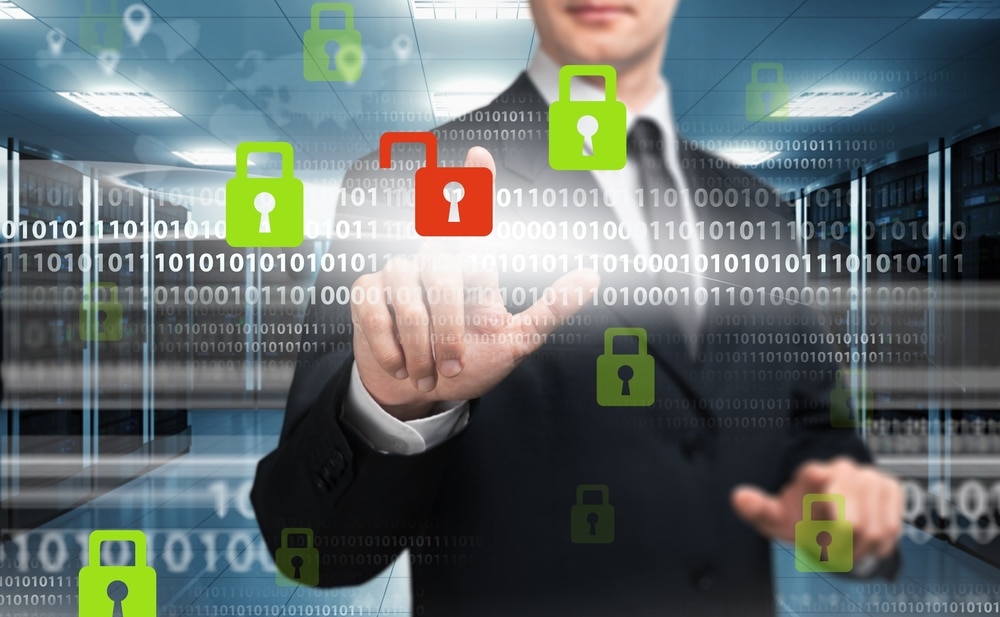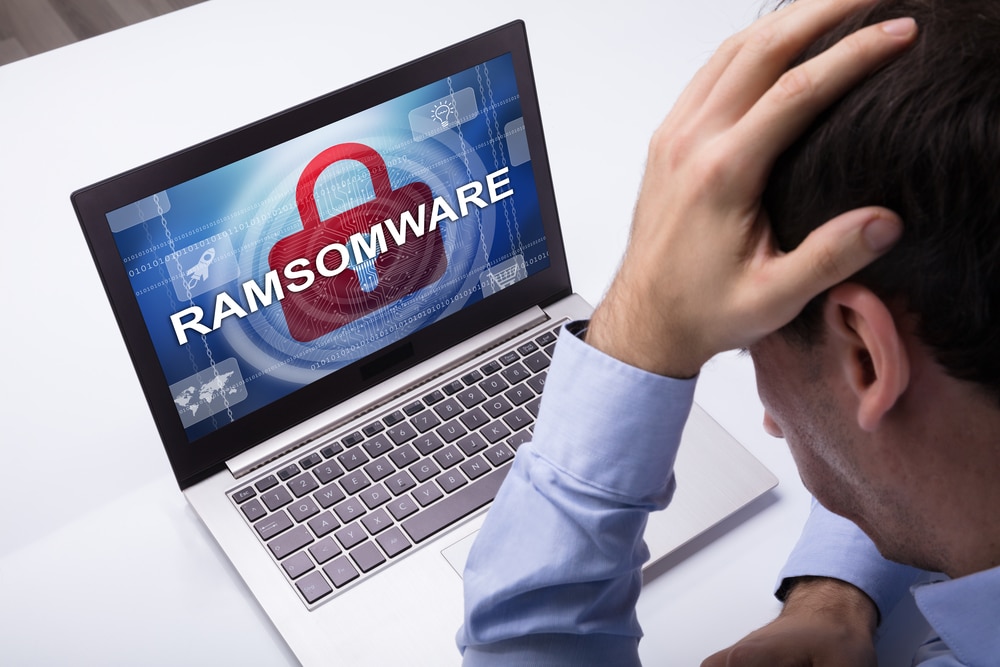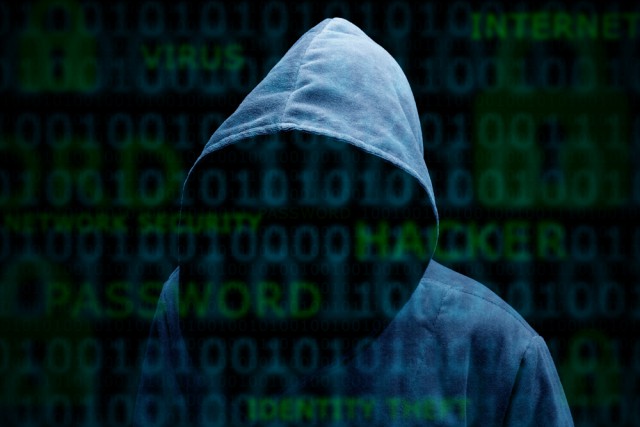
Ransomware attacks can cost enterprises up to 30 percent of operating income
The financial impact of a ransomware attack can cost businesses up to 30 percent of their operating income, with smaller enterprises hit proportionally harder.
A new report from ThreatConnect looks at the financial impact of ransomware attacks on small ($500M), medium ($1.5B) and large ($15B) organizations within healthcare, manufacturing, and utilities.

US and UK are the countries most attacked by ransomware
In the 12 months from April 2022 to March 2023 the US and UK were the countries that suffered the most ransomware attacks.
However, the latest Malwarebytes ransomware report shows that the USA suffered a little over seven times more attacks in the last twelve months than the UK. It's perhaps not a coincidence that the USA's economic output, measured by gross domestic product (GDP), is also about seven times larger than the UK's.

Multiple-threat ransomware attacks become more common
It used to be the case that all you had to worry about with ransomware was encrypted data, but the latest Cyberthreat Defense Report (CDR) from CyberEdge Group reveals that last year 78 percent of ransomware victims faced the consequences of one, two or three additional threats unless they paid the ransom.
Additional threats include launching distributed denial of service (DDoS) attacks (42 percent), notifying customers or the media of the data breach (42 percent), and publicly releasing exfiltrated data (40 percent).

Recovering from ransomware is a long-term commitment -- and a long-term expense
According to Forrester, nearly two-thirds of organizations (63 percent) were breached by ransomware in 2021, up 4 percent from the previous year. Recovery was a long, hard road for many of those enterprises -- while for others, the downstream effects of ransomware were ultimately insurmountable. The alarming rise in ransomware must guide IT leaders' cybersecurity decisions in 2023.
Why is ransomware on the rise? For one, bad actors are becoming far more advanced and prolific. Ransomware gangs continued to make headlines in 2022 for their high-profile attacks and advancements in post-breach encryption. On the other end of the spectrum, the barrier to entry for ransomware is lower than ever before. Ransomware as a service (RaaS) -- which allows bad actors to deploy ransomware for a fee -- has ushered in a new generation of hackers who can target enterprises of all sizes despite their relative inexperience with cybersecurity protocols.

MSI urges caution when downloading BIOS and firmware updates following cyberattack and rumors of $4 million ransom demand
Computer maker MSI has confirmed that it fell victim to a security breach, confirming rumors that sprang up in recent days. The Taiwanese company says that it "suffered a cyberattack on part of its information systems", and has warned customers to exercise caution when downloading BIOS and firmware updates for its products.
Although MSI has shared little in the way of detail about the incident, the confirmation comes after the ransomware group Money Message was said to have breached the company's defenses. The group has made demands for $4 million with the threats of leaking stolen files.

Ransomware-in-a-box: Why containers are a cybersecurity risk
With the creation, storage, and use of data continuing to accelerate dramatically, security vulnerabilities and risks to data integrity are also escalating across the board. The trends are alarming, with one recent study from IDC -- looking at the requirements for ransomware and disaster recovery preparation -- revealing that in 2022, almost 80 percent of organizations surveyed had activated a disaster response. What’s more, 83 percent had experienced data corruption, and most worrying of all, almost two-thirds said that a ransomware attack had resulted in unrecoverable data.
Indeed, there is currently no application type that can be considered to be completely safe from ransomware. Among the wide range of possibilities this situation creates are the risks posed to organizations that are refactoring their applications for Kubernetes. Refactoring is an increasingly popular approach to application deployment, whereby apps are broken down into a range of services that can subsequently be operated independently. One of the key benefits this offers is that the application’s underlying hardware is used more efficiently, while each service can also be scaled as required without impacting other services and resources.

20 percent of endpoints have legacy security vulnerabilities
According to a new report, at least 20 percent of enterprise endpoints remain unpatched after the remediation is completed, meaning that a fifth of machines still have a significant number of legacy vulnerabilities that could be exploited at any time.
The study of over 800 IT professionals from Action1 Corporation finds 10 percent of organizations suffered a breach over the past 12 months, with 47 percent of breaches resulting from known security vulnerabilities.

Ransomware surges as threat actors get more aggressive
Ransomware and extortion actors are utilizing more aggressive tactics to pressure organizations, with harassment being involved 20 times more often than in 2021, according to a new report.
The study, from Palo Alto Networks' Unit 42 threat intelligence team, finds harassment is typically carried out via phone calls and emails targeting a specific individual, often in the C-suite, to pressure them into paying a ransom demand.

Lockbit ransomware victims more than double in February
The Lockbit ransomware group claimed 129 victims in February, more than double the 50 that was reported in January.
The latest ransomware report from GuidePoint Security shows that another RaaS group, AlphV, also significantly increased its reported monthly victim count from 20 to 31.

Is the most cost-effective move in the cost of living crisis investing in cyber security solutions?
In the midst of the biggest cost-of-living crisis in decades, the looming threat of recession, and an unprecedented energy crisis, organizations of all sizes are trying to find ways of cutting costs and saving money. While there are any number of measures organizations can take on that front -- from relatively small ones such as asking people to work from home to save on energy to more drastic measures such as layoffs -- the impact they have is variable at best. One measure that consistently saves organizations money, however, is investing in a proper cybersecurity solution.
In some ways, that might seem counterintuitive. After all, it’s an additional cost that the organization might not otherwise have to deal with. But it really is an investment that can pay off in a big way. That’s because the best cybersecurity solutions not only protect organizations from the threat of cyber attacks but also help mitigate their damage when they do occur.

Threat actors move beyond ransomware to exploit new (and old) techniques
Cybercrime actors are shifting away from ransomware to new, innovative techniques, according to the latest CrowdStrike Global Threat Report released today.
The report shows 71 percent of attacks detected in the last year were malware-free (up from 62 percent in 2021) and interactive intrusions (hands on keyboard activity) increased 50 percent in 2022. This shows how sophisticated human adversaries are increasingly looking to evade antivirus protection and outsmart machine-only defenses.

WithSecure creates an 'undo button' for ransomware
Ransomware attacks continue to plague organizations and can have an effect beyond the financial, damaging reputations and customer trust.
Now though WithSecure has developed a new technology called Activity Monitor that can essentially undo the damage malware can cause.

Ransomware detection improves but attacks persist
Defenders have become more successful at detecting and preventing ransomware, but even so its share of incidents declined only four percentage points from 2021 to 2022.
The latest X-Force Threat Intelligence Index from IBM Security also finds that attackers continue to innovate, with the average time to complete a ransomware attack dropping from two months down to less than four days.

The challenges for cyber resilience in 2023
Given we've all been told that it's inevitable that we'll get hacked, or at the least we need to assume that we will, what does this mean for businesses? It's clear that investment in cyber security measures isn't slowing down the attacks, and in 2023 it feels like there's been a significant increase in reported cyberattacks already. And we've only just hit February!
It would also appear that cyber attacks are becoming more sophisticated and technologically advanced. Fundamentally, you can't prevent a member of your team from clicking a phishing link, and the attack surface remains expanded due to the current hybrid working arrangements in place at most companies. So, if we are being told to expect an attack, does this shift the emphasis from prevention and defense, onto preparation and response? How would you recover your business?

Three-quarters of organizations experience successful email-borne attacks
New research released today by Barracuda shows 75 percent of organizations surveyed have experienced a successful email-borne attack in the last 12 months.
What's more the study, carried out by Vanson Bourne, finds recovering from an email-borne security attack costs victims more than $1 million on average and 69 percent of those hit by ransomware say the attack started with an email.
